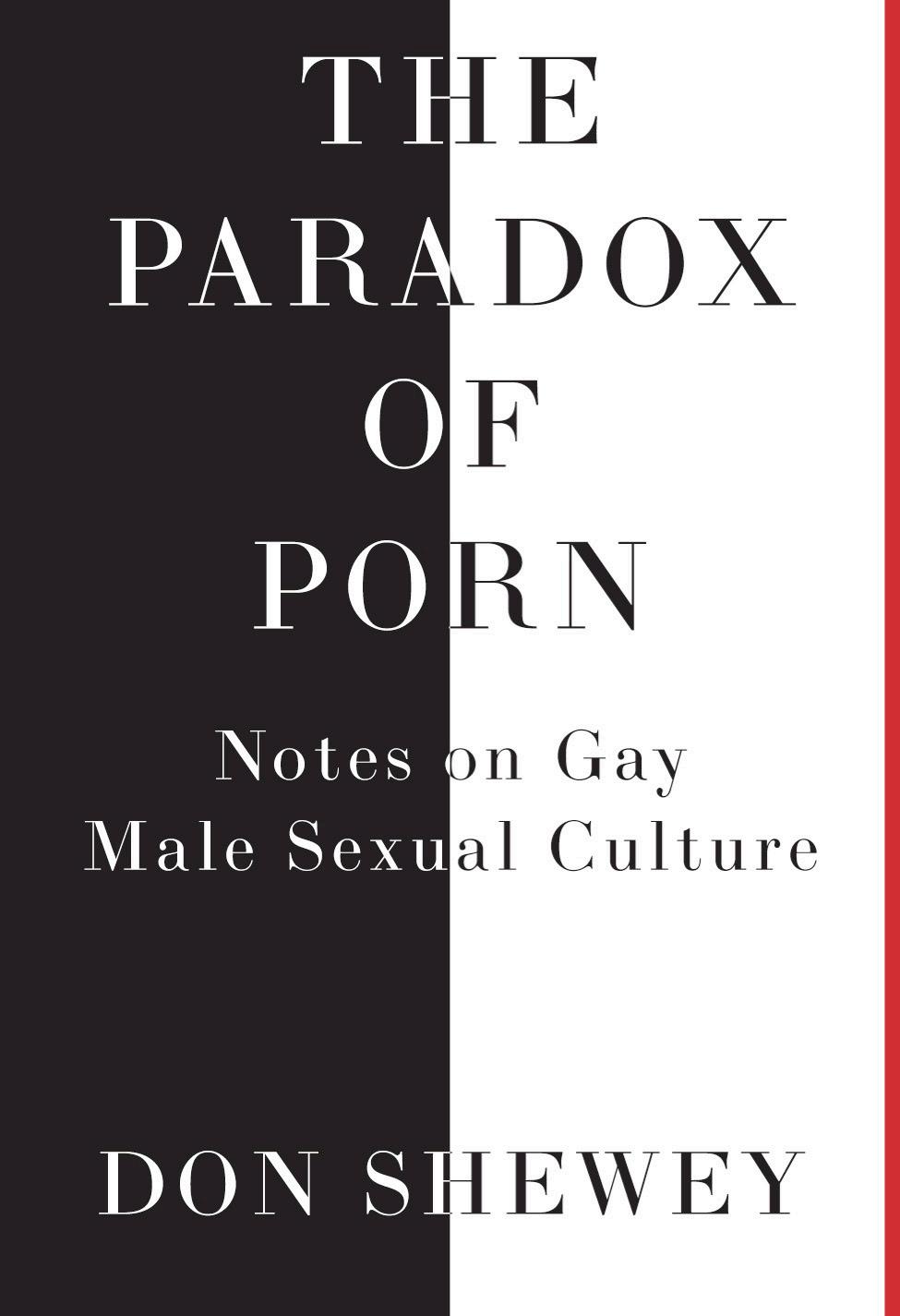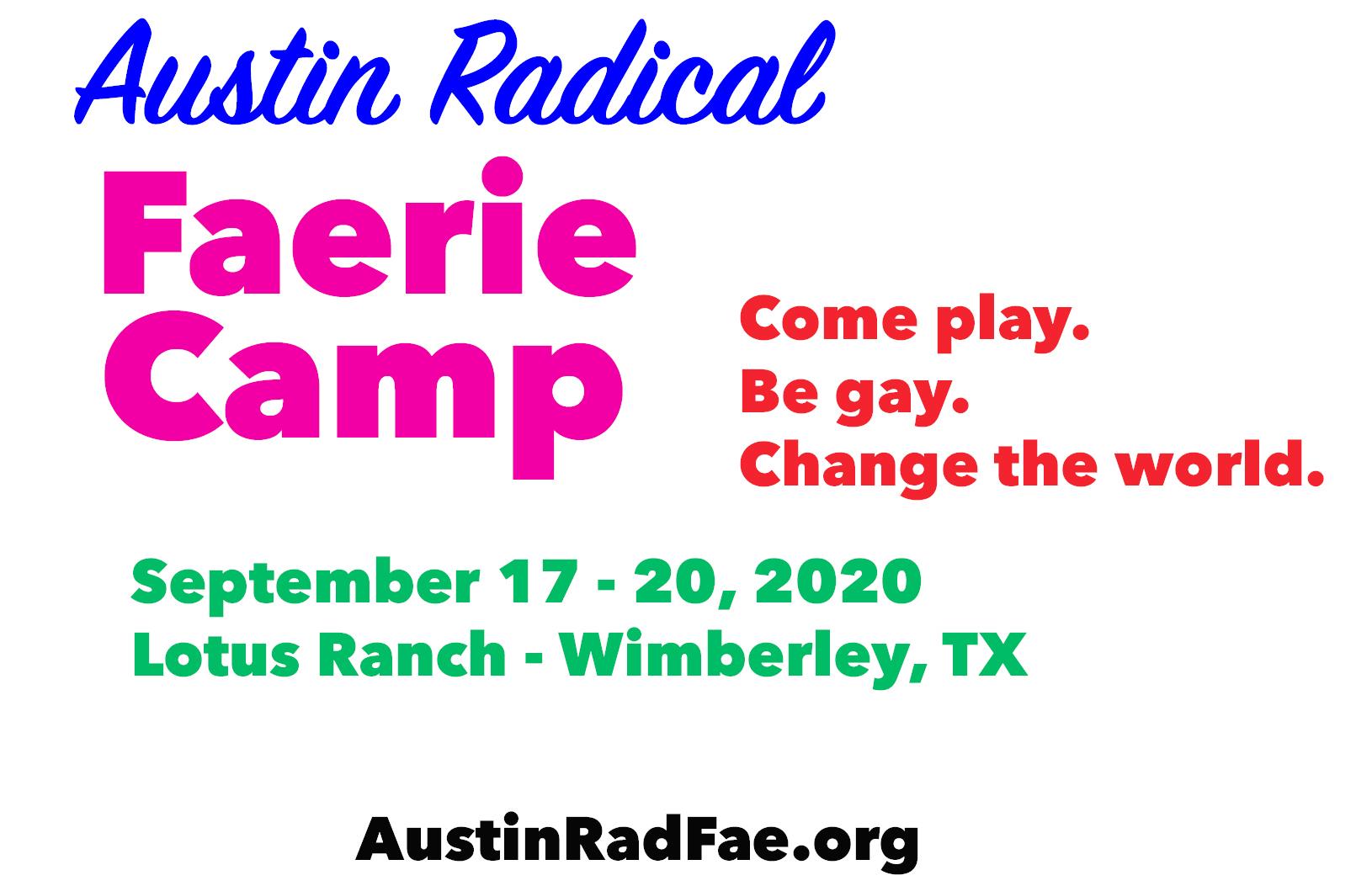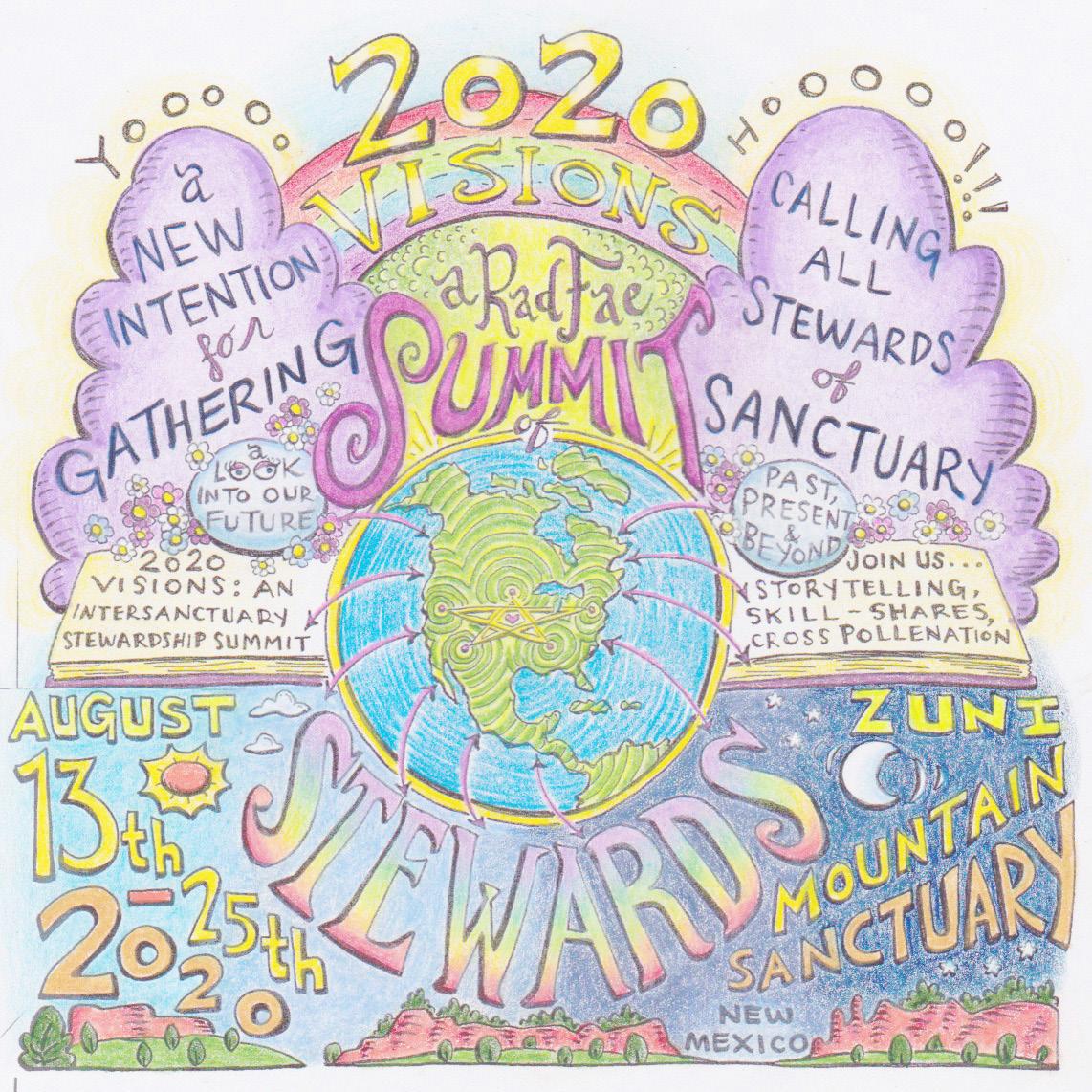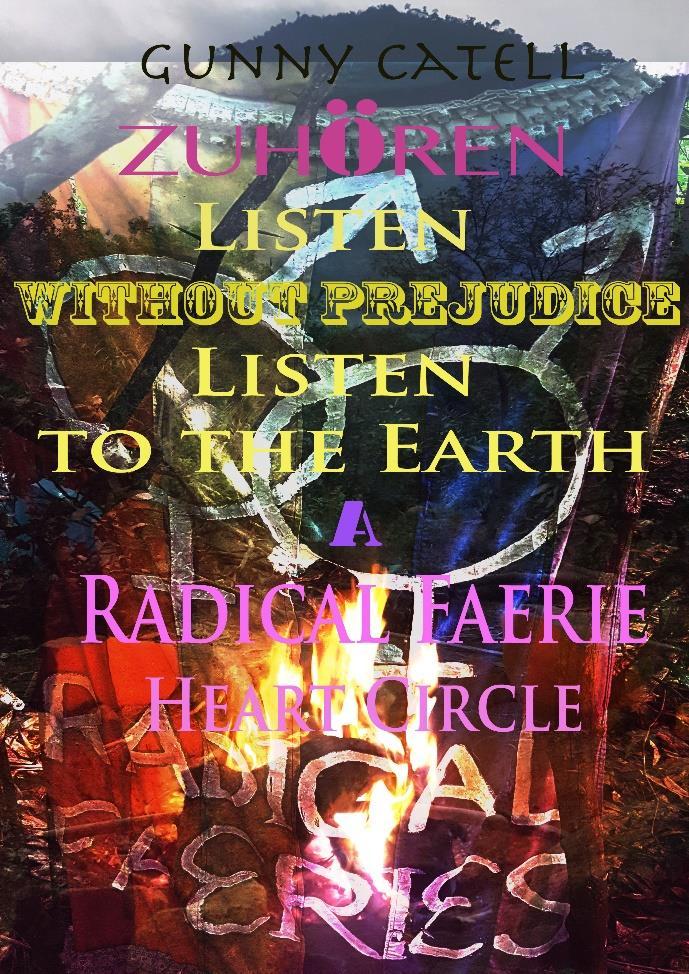
11 minute read
Don Shewey on “The Paradox of Porn” Franklin Abbott
Don Shewey on “The Paradox of Porn” by Franklin Abbott
Don Shewey knows a lot about porn, gay porn to be more specific. His book on the subject is both sympathetic and critical. Shewey is a writer, therapist and self-described “pleasure activist” who lives in New York City. His work as a coach in sex and intimacy with gay men along with his own life experience make him an astute observer of the pros and cons of porn in the lives of gay men. He talks about generational differences, about the solace of porn and it’s dangers. Shewey writes with admirable candor and reading the book is like having a conversation with a wise and witty friend. In addition to his three books about theater he has written for the New York Times, the Village Voice, Rolling Stone and Esquire. We welcome him to the pages of the equally estimable RFD.
What drew you to the subject of the paradox of porn?
I’ve always been a sexually active and sexpositive guy. As a journalist, therapist, and alert consumer of culture, I couldn’t help noticing that almost all discourse in the mainstream media about pornography came down hard with negative judgment, equating pornography with sexual violence, addiction, exploitation, and pathological avoidance of intimacy. And yet we are surrounded by pornography, increasingly more so with the advent of the internet and smartphones. I observed in myself and others the tendency to nod our heads at this negative commentary…and then in private carry on beating off to whatever porn turns us on. I got very curious about this public/ private discrepancy. Of course, since the majority of people are heterosexual, most porn portrays hetero sex, which definitely engages in some unsavory and problematic depictions of women. And the issue of trafficking and the exploitation of economically disadvantaged women in very real. But as a gay guy, I’m not at all interested in hetero porn, and it seemed to me that sex between men in porn was much more egalitarian and didn’t throw up the same red flags. Still, we don’t talk very much about these issues of representation and sexual pleasure, which made it very interesting subject matter for me as a writer.
Can you talk a little about the history of porn in the gay men’s community?
I use “porn” to refer to the widest possible range of erotic imagery, from old-school skin magazines to commercially produced full-length videos, from Tumblr blogs to pic-sharing on hook-up apps, from ancient Greek pottery to whatever got invented just last week. Every gay man has his own individual quirky tastes in images and technology, and you can tell which platform works for you because it gets you turned on and craving sex. (I devote a whole chapter in the book to detailing that progression through various technological revolutions.) For gay men (and that shadow realm of men-who-have-sexwith-men), pornography has played a special role in demonstrating open and unashamed desire, sexuality, nudity, affection, and body awareness in times and places where we literally had no public models of such things. For many gay men, myself included, the tiniest glimpses of homoerotic imagery or same-sex pleasure provided important doses of validation and affirmation early in our self-awareness as sexual beings, even or especially years before we ever acted on our sexual desires. Certainly during the AIDS epidemic, viewing and masturbating to pornography allowed gay men
to observe and celebrate sexuality without exposing ourselves to health risks.
How has the Internet changed the relationship between gay men and porn?
Like you, I’m old enough to remember a time when getting your hands on porn was incredibly difficult and required a lot of furtive slinking around to newsstands, bookstores, and dirty-movie theaters in major cities to find anything at all. Home video started a major shift; you could order stuff through the mail to come to your home. But the internet exponentially increased access to porn of all varieties, which was a boon especially to young guys, closeted guys, and guys living in rural situations.
At some point, I noticed that for a lot of gay guys sex and pornography started to merge. “Sex” didn’t necessarily mean something you did with another person but branched out to include absorption in looking at porn online, sometimes to the exclusion of actual encounters with other people. Internet porn has facilitated the emergence of a whole tribe of gay men who have robust solo sex lives separate from or replacing sex with other people—for better and for worse. Porn is not the best sex education and yet many guys subconsciously have looked to porn for instruction and develop a kind of crazy sense of what’s expected of them on a date. And for all the exciting stuff you can see in porn, it leaves out some of the most delicious and satisfying aspects of sex—love, tenderness, intimacy, affection, mutual care—because those activities aren’t as photogenic as hardcore fucking and sucking. One of the saddest sentences a client ever said to me was “I watched twenty gang-bangs online before I ever kissed a boy.”
Is there a difference between pornography and erotica?
I tend to think of the distinction between erotica and pornography as slightly squeamish or prudish— erotica is the good stuff that I like, pornography is the sleazy stuff that you like. But I get that there is a difference between erotic art, which depicts a wide spectrum of sensual imagery, and pornography, whose only intention is to get you aroused and get you off. I know guys who prefer sexy stories (the epitome of “erotica”?) to pictures or videos. Using your imagination can sometimes be more arousing/exciting than viewing explicit porn. For some people, the best aspects of sex have to do with anticipation, flirtation, the chase, seduction, and those are hallmarks of erotica, whether written stories or soft-core photos of partially dressed rather than naked men. Personally, I’m a blunt Taurus—I like it all out there, direct and to the point. Taste in erotic imagery is so, so individual.
Porn at its best? Porn at its worst?
The best-case scenario is when your interaction with porn liberates imagination, affirms desire, makes you laugh, makes you cum, expands your awareness of the many possibilities of sexual pleasure, increases understanding and compassion for other people’s experience, builds confidence, and makes you feel good about yourself. And then there are the shadow aspects of porn. The internet and smart phones make it super-easy to get entranced by looking at porn for hours, interfering with healthy life functions. Guys who have spent more time looking at porn than having encounters with real people run the risk of developing very distorted ideas about what constitutes normal sexual activity and normal bodies, creating pressure on themselves and their partners to Perform Like a Porn Star. And that pressure can lead people to avoid real-life encounters, fearing judgment or rejection.
What is our future with porn? How will it change us? How will we change it?
The future of porn obviously means moving away from the old-fashioned notions of commercially produced porn videos/magazines/etc. Most of the imagery most of us look at these days shows up in the realm of “social media” and is some version of homemade. We all walk around with high-quality cameras in our pockets, making it easy and fun to make our own erotic/pornographic pictures and videos and share them instantly. Fun as it is to look at and/or make homemade porn, I notice that I’m increasingly unhappy to see how taking videos or pictures has become a routine part of having sex. It’s like the sex isn’t real unless you’ve captured it on your camera, and people pay more attention to their devices than to their flesh-and-blood partners. This is a big issue everywhere in contemporary life, how addicted we’ve become to our devices. I include myself in that. They’re so seductive and useful and alluring, and it becomes harder and harder to tolerate a quiet moment without checking, clicking, swiping. There’s no going backwards, really, so I see the challenge going forward as one of finding a balance between smartphone technology and being actually present to each other, in person, in the moment.



Back Issue Sale!
20% off
for Five or More www.rfdmag.org
Gathering of the Circle of Loving Companions

on the 30th anniversary of Faerie Sex Magick at Wolf Creek, Oregon July 4-11th, 2020
For more information, to help organize and to register, contact robin hood at rbirch9@gmail.com
Announcing a New Book about Radical Faeries: ZUHÖREN - LISTEN
WITHOUT PREJUDICE, LISTEN TO THE EARTH A Radical Faerie Heart Circle
O bserving the World and its problems with the eyes of a Radical Faerie.

Celebrating 40 years of Radical Faerie Gatherings Mata Hari wrote a new book –the sequel to "Rise Like A Faerie" - the first work everwritten outside the USA about Radical Faeries - with many personal contributions from over25 Faeries worldwide and interviews with Harry Hay's companions.
Withreportsfromgatheringsandsanctuariesin Austria, Australia, Bali, Belgium, Berlin, Breitenbush, China, France, Guatemala, Hungary, Israel, NewZealand, Netherlands, Wolfcreek, Portland, Transylvania, UK, ViennaandZuni.
“Your book is an important historical and personal witness. I wish you all best with its publication. And keep on writing“! Mark Thompson
Availabe from www.radicalfaeries.at or email to: faerietreffen@hotmail.com * Softcover $ 28
Announcing a New Book from White Crane Books: The Evans Symposium The long awaited sequel to Witchcraft and the Gay Counterculture.
In 1975 Arthur Evans presented a series of lectures based on his research into LGBT history and cultural roots in European societies of the medieval era. The ground-breaking work was subsequently collected into the 1978 publication of his book Witchcraft and the Gay Counterculture. Working with Arthur at the end of his life, White Crane Books convinced Evans to gather the remaining materials—that had been edited from the original book or simply hadn’t made the cut—into a sequel of sorts to that book. Arthur did so and called it Moon Lady Rising. We present the entirety of Arthur Evans work for his symposium material here.
“White Crane Books, once again, reminds us of the important works of our time by renewing the essential writing of our elders. Arthur Evans’ original work in Witchcraft and the Gay Counterculture is a seminal piece of lost LGBT history; and the added, new material of Moon Lady Rising stakes a further claim to our shared, birthright history. We will not be erased.” —Mark Thompson, author, activist, Radical Faerie
“No book was of greater importance than Witchcraft and the Gay Counterculture as the modern gay liberation movement was forging our identity as a people.” —Robert Croonquist, activist, first generation Radical Faerie and Founder of Youth Arts New York/Hibakusha Stories, a member organization of ICAN (the International Campaign to Abolish Nuclear Weapons), 2017 Nobel Peace Laureate.

Available at www.whitecraneinstitute.org/books Hardcover $29.95 • Cloth cover $19.95
Or mail a check payable to “White Crane Institute” to:
Bo Young White Crane Institute 22 County Route 27 Granville, NY 12832
Issue 182 / Summer 2020 LEGENDARY CHILDREN
Submission Deadline: April 21, 2020 www.rfdmag.org/upload
Holler if you identify as QTIPOC. What’s that? You say you’ve never heard the term. No prob. QTIPOC is shorthand for qweer/trans/intersex people of color. And we want to hear from you.
For too long, qweer culture has pushed the lives and stories of people of color to the sidelines. These days we may be more familiar with the work and voices of famous folk—think of Marsha P. Johnson and George Takei, Bayard Rustin and Sylvia Rivera, Chrystos and Audre Lorde—but what does it take to live now as an everyday QTIPOC? How does the world embrace you? How does it restrict you? Our diverse viewpoints flavor our interactions, from the interpersonal to the intra-communal. When the QTIPOC realm intersects with the Faerie realm, what happens? How has this intersection changed you? How has this intersection changed Fae space?

We’re looking for essays and free verse, artwork and autofiction, choreopoems* and pix: You choose the format you feel will best communicate your own QTIPOC experience. Think of the QTIPOC generation who are just discovering themselves: What would you like to pass on to them? And the young QTIPOC out there: What info would you like your elders and teachers to keep in mind? What will it take to bring all of us— whether we identify as dyke, homo, Two-Spirit, polyam, pansexual, asexual or bi—to a place of Radical inclusion? Maybe you have a piece of answer. Maybe you’d be willing to share.
So here’s the call, QTIPOC. Now’s the time for all the legendary children to bring that summer heat. Tell RFD what you think, show us how you live, reveal how you feel. We want to see you shine.
*“Choreopoems” comes from the playwright Ntozake Shange, in reference to her play “For Colored Girls who have Considered Suicide.”
a reader created gay quarterly celebrating queer diversity









